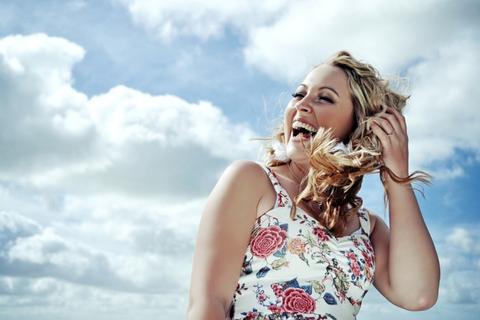Cloudy skies and not-so high temperature don’t mean that you will be complacent in using sun protection. It may sound crazy that a lot of people take for granted the claim completely and consider it as a myth. It is no secret that even on cloudy days, one can still get sunburns; however, is there a scientific explanation that will back the idea of UV rays being stronger during cloudy days? Let our Calgary optometrists help explain.
What are UV Rays?
UV rays or ultraviolet light is an electromagnetic radiation, which has a shorter wavelength compared to the light we see every day. It’s the same with gamma rays, microwaves, and x-rays where it’s not visible to our eyes. It is a light that we can’t see.
The sun is the most known source of UV light; electrical arc emission is created by the specific source of light such as black lights. Ultraviolet light can result in chemical reactions which cause for specific substances to glow or shine.
The sun’s natural occurring ultraviolet light comes in two various types; UV-A which is very common and UV-B considered as the most powerful. Although each type has a part in eye damage and skin cancer, UV-B is responsible for the production of vitamin D and is responsible for those awful sunburns.
UV Levels
The level of ultraviolet light in international scale ranges from 1 to 20 and determines the amount of UV radiation that reaches the surface of the earth. A UV level of 3 or above is deliberated as high enough to result in skin damage. There is UV weather forecast that bases the level of UV on a clear day, not considering rain, pollution or clouds. It provides you information of the maximum level of UV rays expected for that day which typically happens at noon.
How many sunscreens do you need?
A lot of people do not use sufficient sunscreen, which applies only ¼ to ½ of the amount recommended. The recommended amount for an adult is one ounce of sunscreen to protect exposed areas – one ounce is equivalent to one shot glass. The amount also depends on the body size of an individual.
Always bear in mind to apply sunscreen on areas of the body that are exposed like ears, arms, hands, and face. Ideally, it should be applied 15 to 30 minutes before you go outside. Lips should also be protected by using a lip balm with 30 SPF level at the minimum. To make sure that there is sufficient protection; sunscreen must also be reapplied every 2 hours or after swimming.
These recommendations by Dr. Alex Wilson & Associates must be followed the whole year round, regardless of the weather. Skin protections don’t only make you appear much younger but will defend you from getting skin cancer.
